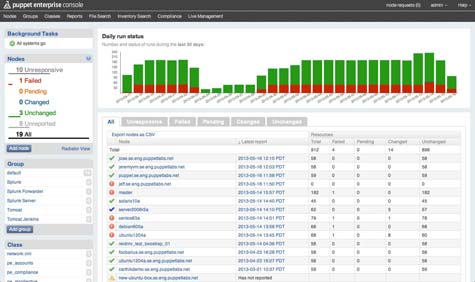One of the challenges with IT automation is that in the event something goes wrong, the impact can be catastrophic. A configuration error, for example, on one machine may create an inconvenience. But an error that is propagated instantly across hundreds of servers can take a business down.
This week, Puppet Labs moved to give IT organizations more control over how groups of nodes are managed, to allow IT organizations to logically group servers together in a way that gives them more granular control over the provisioning and configuration process.
According to Puppet Labs CEO Luke Kanies, the basic idea is to allow IT organizations to embrace IT automation with more confidence without necessarily having to sacrifice any of the benefits provided in terms of provisioning systems faster.
Puppet Enterprise 3.0 also includes support for a new software-defined approach to managing IT infrastructure that not only makes it easier to manage IT systems and storage at a higher level of abstraction, it gives IT organizations the option to standardize on a single software-defined management tool at a time when every vendor is rolling out yet another software-defined management tool.
Finally, Puppet Enterprise 3.0 has been enhanced to provide a 200 percent improvement in performance that Kanies says means the open source IT automation tool can now be effectively used to manage thousands of virtual machines and applications in minutes.
For all that automation, Kanies says the goal is not to engineer IT administrators out of the process. Rather, Kanies says that by eliminating all the mundane tasks associated with managing IT, those administrators should have more time to add business value by analyzing based on data being generated by Puppet. As an open source tool, Kanies says Puppet Labs sees Puppet as a way to affordably put that kind of technology in the hands of every IT organization.
Obviously, in some cases, IT automation may require additional training of IT administrators to allow them to provide the higher level of analysis. But overall, the march toward IT automation is relentless, which means IT administrators that are used to manually provisioning machines using custom scripts need to start thinking now about making a transition to new approaches that enable organizations to manage hundreds of servers as easily as they would 10.



